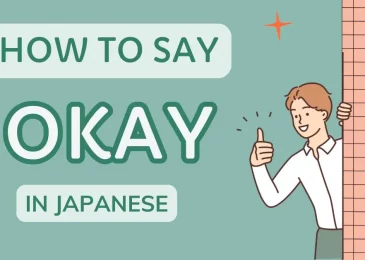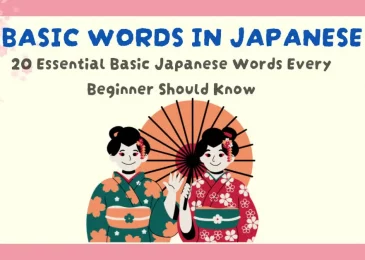Learning Japanese starts with Hiragana, the most fundamental of the three Japanese writing systems. Used primarily for native Japanese words and grammatical elements, Hiragana is essential for any beginner in Japanese. In this guide, you’ll find a complete Hiragana chart along with helpful explanations and pronunciation tips, making it easier to grasp each character’s role in the language. Let’s dive in and explore how this foundational chart can make learning Japanese simpler and more enjoyable.
What is Hiragana?
Hiragana is one of the three core writing systems in Japanese, alongside Katakana and Kanji. It consists of 46 unique characters, each representing a syllable rather than an individual letter, making it a phonetic alphabet. These characters are structured to represent all essential sounds in Japanese, covering vowels, consonants, and blended syllables.
The Hiragana characters are neatly arranged in rows (gojuuon order) that follow a logical pattern, helping learners understand how Japanese sounds are formed and connected. Each row corresponds to a different vowel sound (a, i, u, e, o), and the columns represent consonants (such as k, s, t, n, etc.). This layout makes Hiragana easy to navigate, allowing learners to quickly reference and practice sounds.
Hiragana’s simplicity and versatility make it indispensable in everyday Japanese. It’s primarily used for native Japanese words, particles (such as wa, ga, ni), grammatical functions, and when words do not have a specific Kanji. Because of its fundamental role, mastering Hiragana is essential before moving on to more advanced aspects of Japanese. With Hiragana, you can read beginner-level Japanese text, navigate basic grammar, and even sound out new words as you continue learning. This system is a cornerstone of Japanese language education and serves as the first step for any Japanese learner.
1. Basic Hiragana chart (Gojuuon)
The chart below presents the core Hiragana characters, organized by vowels (horizontal rows) and consonants (vertical columns). This layout simplifies understanding the relationships between sounds, making it easier to memorize each syllable.

Learn Hiragana characters with MochiKana
Along with downloading these charts, consider using MochiKana – Learn Hiragana, which teaches Hiragana from beginner to advanced levels. MochiKana helps you quickly remember the Japanese alphabet within a week by prompting you to review at the optimal “Golden Time.” It’s tailored for beginners, offering a step-by-step learning path. MochiKana also includes comprehensive learning games and practice tests that boost your memorization skills.
The Hiragana chart was developed from simplified versions of Chinese characters with similar pronunciations. This chart illustrates the origin of each Hiragana character and the specific Kanji from which it was derived.
2. Voiced sounds (Dakuon) and Semi – voiced sounds (Handakoun)
In Japanese, some sounds can be modified to create “voiced sounds” (Dakuon) and “semi-voiced sounds” (Handakuon) by adding small marks to specific characters. Adding “ten-ten” (〝) to certain characters alters the “k,” “s,” “t,” and “h” sounds, while adding a small circle called “maru” changes “h” sounds to “p” sounds.
3. Combination sounds (Youon)
Combination sounds are formed by pairing certain characters with small versions of “ya,” “yu,” and “yo.” This creates blended sounds for more fluid pronunciation and helps represent syllables commonly used in Japanese words.
Tips for Memorizing Hiragana
1. Practice writing by hand:
Writing Hiragana by hand is one of the most effective ways to memorize each character. As you write, you engage muscle memory, which reinforces recognition and recall. Focus on the correct stroke order and direction to ensure accuracy, as this not only helps with memorization but also improves your ability to write quickly and legibly.
2. Use flashcards with sound:
Flashcards are invaluable for memorizing Hiragana, especially when they include audio. By seeing the character and hearing its pronunciation, you activate both visual and auditory memory. Try to say each character out loud as you review the flashcards, which will further reinforce the connection between the shape and sound of each Hiragana character.
3. Practice daily with spaced repetition:
Consistency is key when learning Hiragana, so practicing daily helps maintain momentum. Use spaced repetition, which spaces out your review sessions to maximize long-term retention. Apps with spaced repetition systems (SRS) automatically schedule your reviews based on your progress, helping you strengthen memory and avoid cramming.
4. Group characters by similarities:
Break down Hiragana characters into smaller groups based on similar sounds or shapes. For example, learn all the characters in the “k” row together (か, き, く, け, こ) or focus on characters that look alike (like さ and き). Grouping characters in this way makes learning more manageable, allowing you to focus on specific patterns that will help with recognition and recall.
Hiragana mnemonics chart
A helpful way to learn Hiragana is by using mnemonic devices that connect each character to an image or idea, making it easier to remember. This approach uses visual or conceptual hints to reinforce the shapes and sounds of each Hiragana character. Here’s an overview of some common mnemonics:
| Character | Mnemonic | Sound |
| あ (a) | Looks like an apple with a stem. | “a” |
| い (i) | Resembles two eels side by side. | “i” |
| う (u) | A surprised face with arms up. | “u” |
| え (e) | Similar to an exclamation mark. | “e” |
| お (o) | A basketball hoop with a net. | “o” |
| か (ka) | Looks like a cut with a knife. | “ka” |
| き (ki) | Imagine a key with a stem. | “ki” |
| く (ku) | Shaped like a beak of a bird. | “ku” |
| け (ke) | Like a keg with a handle. | “ke” |
| こ (ko) | Looks like a pair of corner brackets | “ko” |
Conclusion
Mastering Hiragana gives you a powerful foundation for further Japanese study, preparing you for Katakana and Kanji. With a solid understanding of Hiragana, you can begin reading beginner-level Japanese text, and work towards expanding vocabulary and grammar skills. This chart and guide are essential tools in making the Japanese language accessible, whether you’re practicing independently or looking to expand your language skills for travel, work, or personal growth.










